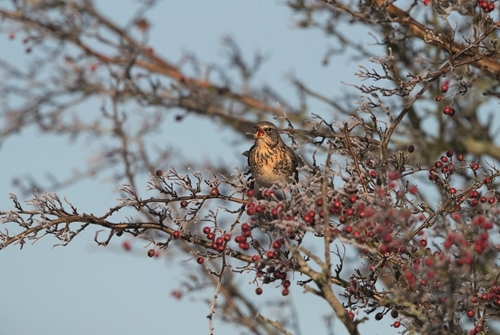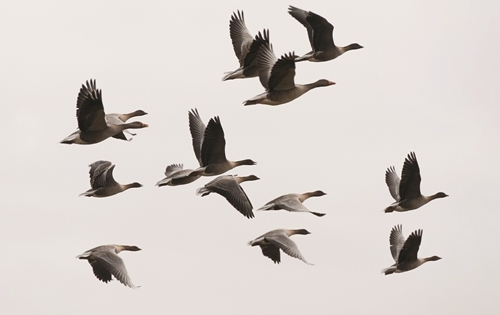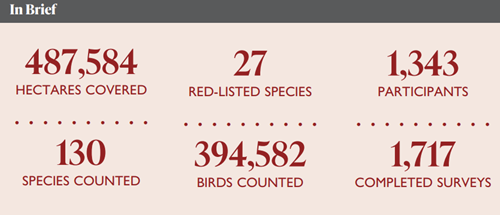Originally Published in GWCT Gamewise. Eleanor Williams looks at the Big Farmland Bird Count as it celebrates its 10th birthday.

Photo Credit: Helge Sorensen
When the idea was hatched a decade ago, around 500 farmers signed up to the GWCT ’s Big Farmland Bird Count (BFBC) to record the birds on their land during the first two weeks of February. That was in 2014. This year, more than 1,700 counts were carried out, covering nearly half a million hectares of the British countryside.
Despite this year’s atrociously wet and windy weather, hundreds of farmers, land managers and bird enthusiasts took part in the annual count and headed out into the fields armed with binoculars and a count sheet.
It was my first time working on the Big Farmland Bird Count, and learning what an important tool it is in understanding how we can bring biodiversity back to our farmed landscape – up to 72% of the UK – was fascinating.
To kick off the count we headed to the Barker family farm in Suffolk for a launch that was attended by more than 60 people representing not just farmers, but also the RSPB, the Woodland Trust, Wildlife Trusts, Defra, Natural England, and the main sponsor of the BFBC: the NFU. The media coverage was great with BBC News, ITV and several radio stations also turning up for the day.

Photo Credit: Helge Sorensen
In the weeks that followed, the counts kept coming in and it was soon clear that we had surpassed the target we had set ourselves. The Big Farmland Bird Count was once again a success. The biggest winners, however, will always be our farmland birds, many of which are in steep decline. Their numbers have dropped by more than 60% in the past 40 years and one in four of the UK’s bird species is in serious trouble. But by counting and recording their presence across the country, we can see how they are faring and spot any trends in the abundance of certain species.
The counts also help us see what effect measures put in place by farmers, such as conservation headlands, field margins and wet areas, are having on bird populations. Our data from the past 10 years has shown that four times as many yellowhammers are seen on farms with both an agri-environment scheme and supplementary feeding in place.
Working out where and why they thrive, is the first step in trying to reverse the decline in species such as grey partridge, fieldfare and yellowhammer. This will in turn inform the advice that the GWCT gives to farmers, land managers and owners on how they can improve the habitat for their wild birds.
This year’s counts are still being analysed by our researchers, but we will bring you an update in the next issue of Gamewise.
